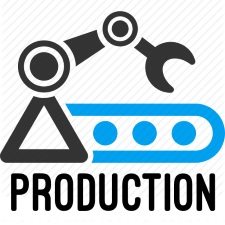Time Study | Meaning | Objectives | Advantages & Limitations
Table of Contents
What is Time Study?
Time study is concerned with the determination of the amount of time required to pet form a unit of work. It consists of the process of observing and recording the time required to perform each element of an operation so as to determine the reasonable time in which the work should be completed.

Definition of Time Study
Time study is defined by ILO as given below:
Time study is a work measurement technique for recording the times and rates of working for the elements of a specified job carried out under specified conditions and for analyzing the data so as to obtain the time necessary for carrying out the job at a defined level of performance.
Who developed Time Study concept?
The famous American Engineer, Frederick Winslow Taylor (also known as the father of scientific management movement) was the man behind the development of time study. In addition to Taylor, Frank Gilbreth (along with his wife Lilian Gilbreth) have made lasting contributions in the field of time study. Taylor’s time study was further refined by an American Industrial Consultant, Charles E. Bedaux, during 1911.
Before undertaking time study, it is necessary to see that product, shop layout, handling system, equipment and tooling, materials and parts, lot-size, working conditions, work place arrangement, work methods and motion sequence, are fully standardized.
Where is Time Study most effective?
Time study is fruitful and most effective in plants having large-scale output of standardized product, on jobs repetitively performed. Time study is not that much useful for non-standardized products; it is almost impractical to conduct time study for operators doing a series of semi-standardized jobs in a random sequence.
What does time study involve?
The time study procedure typically involves using a stop watch. Output standards could be set, given the motion pictures and with the exposure rate known, based on job element times derived from the simo-charts. Other popular techniques for conducting time study includes the use of electronic timers and predetermined standard motion element times.
The time study is done typically by industrial engineers, whose chief heads up the industrial engineering department within the purview of engineering division.
Objectives of Time Study
The main objective of time study is to determine by direct observation, the quantum of human work in a specified task and hence to establish the standard time, within which an average worker working at a normal pace should complete the task using a specified method.
The other objectives are:
1. To fix a fair output rate for workers
2. To furnish a basis of comparison for determining operating effectiveness.
3. To set labour standard for satisfactory performance.
4. To compare alternative methods in motion study in order to select the best method.
5. To determine standard costs.
6. To determine equipment and labour requirements.
7. To determine basic times/normal times.
8. To determine the number of machines an operator can handle.
9. To balance the work of operators in production or assembly lines.
10. To set the completion schedule for individual operations or jobs.
11. To determine the cycle time for completion of a job.
Advantages of Time Study
The following are the main advantages of time study:
1. Output standards are easily convertible into standard labour cost per unit of output.
2. Output standards serve as yardsticks guiding managerial comparisons of actual and standard hourly production rates. An operations manager prepares lists showing actual-to-standard output ratios for each operator and each operator’s group. These reports enable the supervisor to identify substandard workers, so that they may be brought up to standard production efficiency.
3. Output standards facilitate scheduling and controlling the flow of production, through the determination of numbers of machines and operators required to maintain production schedules and through balancing line production for the several line operations.
4. Output standards also facilitate evaluation of machine capacities, a knowledge of which aids plant engineers in selecting replacement machines for purchase and use.
5. Time study may be taken for checking operators’ complaints about tight rates.
6. Observation during a time study may enable the engineer to suggest further improvement in work methods and work-place output.
7. During a time study, the engineer may note inconsistencies in motion sequences used by individual operators, leading to retraining recommendations. The men involved may then more easily attain standard output status.
Limitations of Time Study
Since the practice of time study is not pure unadulterated science, it remains subject to certain limitations. Some of the limitations are as follows:
1. Time study is not suitable for non-repetitive jobs and for non standardized or indirect labour jobs.
2. It is less suitable on jobs paced by automatic machines than on jobs where operators control the work place.
3. If an output standard is unattainable, it subverts effective performance by lowering operator morale, due to the offered but unfulfilled incentive.
4. Coupled to incentive wages, output standards may contribute to under emphasis on the quality of production.
5. Production cost may be increased due to loose output standards.
6. Unions quite frequently oppose the time study because the accuracy of time study is overly dependent upon the skill and judgement of the time-study man. The time study engineer must be well trained and he should have both the background and experience in conducting time study. Of course, to reduce the area of human judgement, the time study engineer may employ work sampling technique.
7. Mechanical, physiological, psychological and sociological sources of variation may affect the output and quality performance of workers adversely. This could definitely upset the successful application of time study based output standards.



